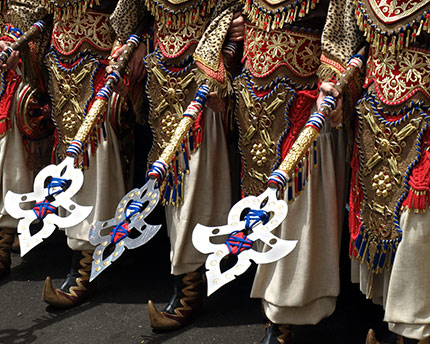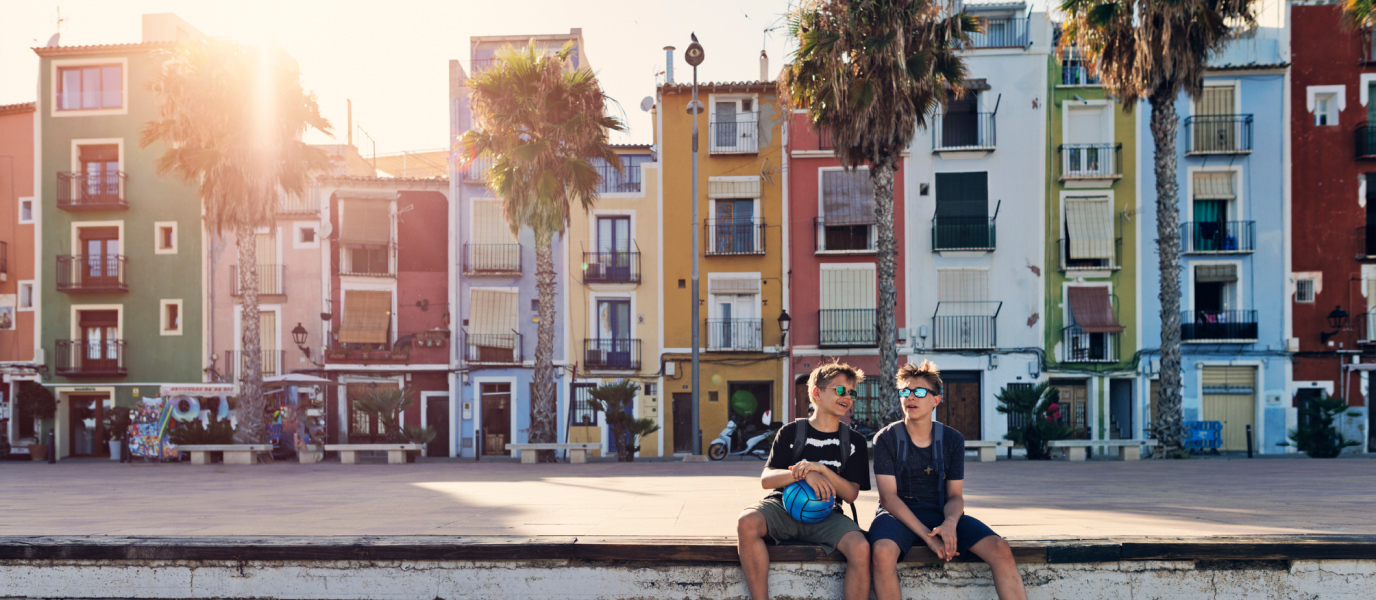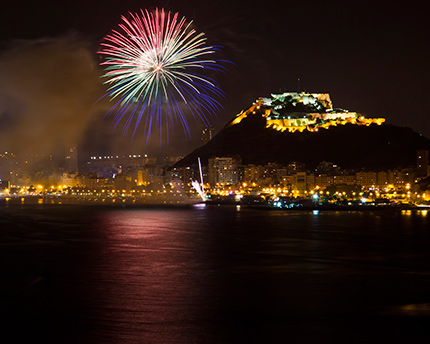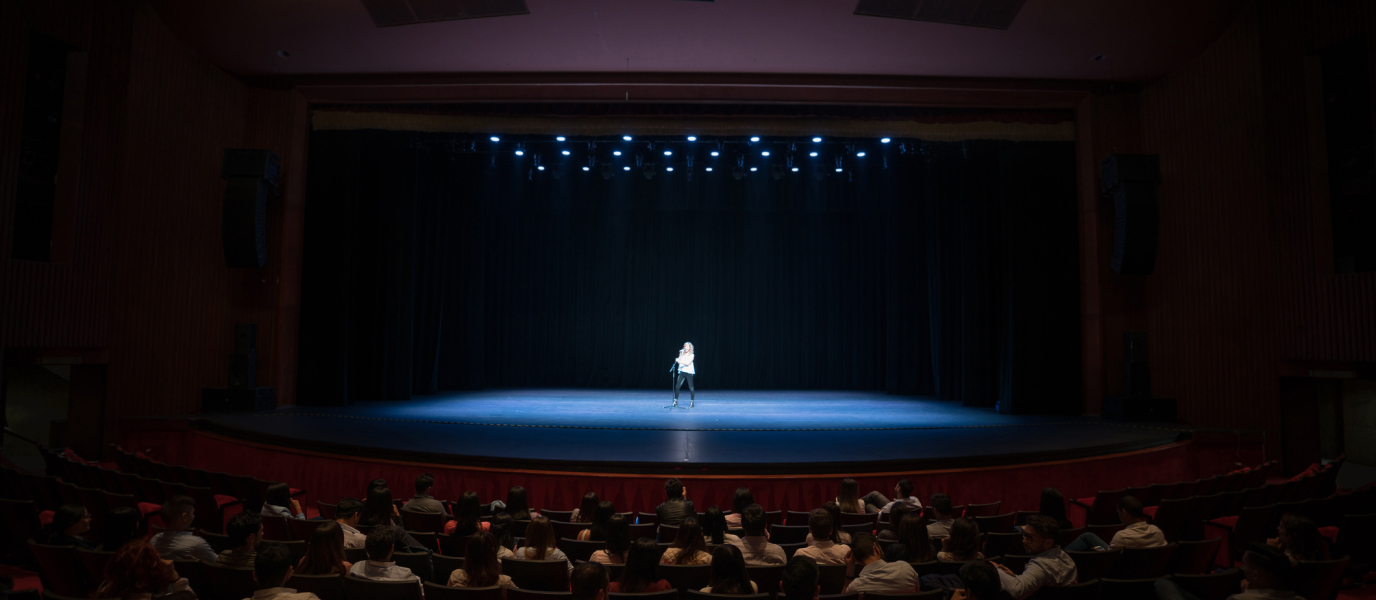The only way to understand why these Moors and Christians pageants are so popular in Alicante is to be present at one. Their origins date back to the sixteenth and seventeenth centuries, and some comparison can be made with the Catholic festivity of Carnival, although there is a difference. Here too people dress up, and there are local clubs (peñas) and associations (comparsas or filàes), but historical commemoration is an essential element of the celebration. In towns throughout the province of Alicante, the battles between Muslims and Christians at the time of the Reconquest are re-enacted over and over again.
The spirit is the same, but each area has its own particular features and dates. Attending the festivities in the city of Alicante is not the same as seeing them in Alcoy, Elda, Orihuela, Elche or Altea. Each of these towns commemorates the specific events that occurred there. Fans of these pageants enjoy both the variety and the similarity. Processions, mock battles and historic re-enactments fill the whole province with colour at different times of year. Let’s visit the most significant of these Moors and Christians pageants.
The Moors and Christians Pageant at Alcoy
The festivities at Alcoy, which are held in honour of St. George, are among the oldest and most popular in the regional community of Valencia. They were classified as being of Interest to International Tourism in 1980 and they commemorate the Battle of Alcoy, which took place in 1276. In accordance with the historical account, the town’s inhabitants re-enact the battle their ancestors fought against the Muslim warlord Al-Azraq. According to legend, the figure of St. George mounted on horseback appeared on the battlements at a crucial moment in the battle.
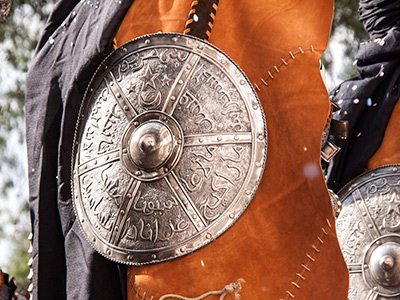
Thanks to St George’s intercession the Christians won the battle, and events are organised each year in his honour on 23 April, marking the start of the festivities. The joyful “pregón” (the proclamation inaugurating the festivities), known as La Gloria, begins with a parade in which a participant (festero) from each filà takes part. The filàes are associations of local people who wear the same costumes and share much camaraderie. In Alcoy there are 28 of them. Both formations parade, divided into what were the two original companies: that of the Moorish Christians and that of the Christian Catholics. The inaugural ceremony ends with a pyrotechnic celebration called a mascletà, in which very loud firecrackers are set off in rhythmic succession.
Everything about the Moors and Christians pageant of Alcoy is undoubtedly very striking, but the “Día de las Entradas” is spectacular. It includes all of the filaes, both the Moors and the Christians (about 5,000 people). The procession starts and ends at the Plaza de España and follows a route through the main streets of the town centre. Marching bands, drummers and buglers accompany each formation. There are also floats and palanquins. An authentic explosion of colour, splendour and gaiety to enchant visitors.
And yet another key moment awaits: the celebration of Battle Day (or Día del Alardo). Skirmishes are staged with arquebuses (a predecessor of the musket) being fired in the town’s streets. And after a number of attempts to reach a settlement and clashes between the two sides, the Christian captain finally confronts the Moorish captain. The re-enactment culminates at the end of the day with the appearance of St. George on the castle battlements.
The Moors and Christians Pageant at Elda
Elda’s Moors and Christians festivities take place around the first weekend of June. Classified as being of interest to tourism, they pay homage to the town’s patron saint, Saint Anthony. For five days Elda has its own experience of time travel. Locals and visitors are transported back to the time when Christians and Muslims were fighting over the same lands. Everyone takes part in the rivalry between the two sides, accompanying the formations of one or the other.
Gypsies, smugglers, students and pirates join with the Christians. The royalists, Moroccans, Muslims and Armies of El Cadí form the Moorish faction. Around 7,000 people make up Elda’s nine comparsas. For some years now a text by local historian Antonio Poveda Navarro has been recited on the historical events that occurred in Elda during the Reconquest.
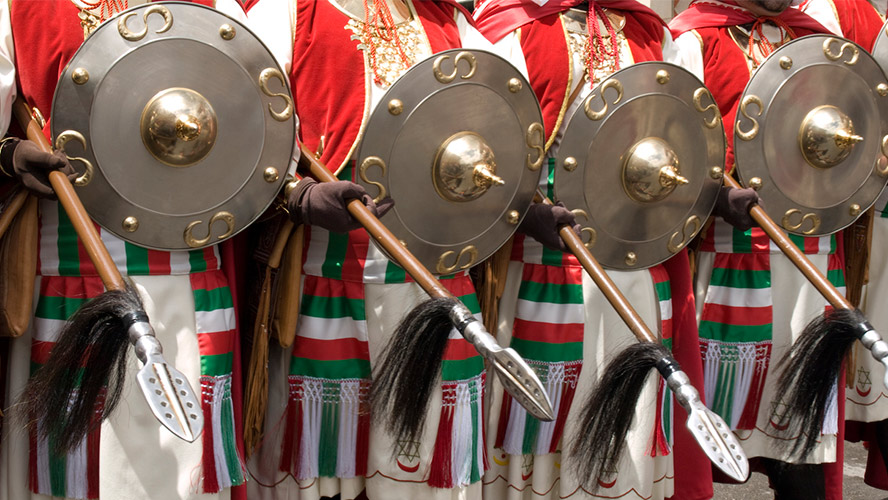
The festivities begin with the “Entrada de las bandas”, during which marching bands from all over the regional community of Valencia perform. This concludes with the multitudinous “Idella Pasodoble”, the anthem of the festivities’, sung by thousands of people in the Plaza de la Constitution. Another outstanding event is “La Retreta”, in which some of the pageant participants take part in a festive and informal parade. And, as usual in these celebrations, the “Entrada mora” and the “Entrada Cristiana” parades are of particular importance.
The Moors and Christians pageant of Elda is particularly noted for the important role played by women, who participate in the mixed formations, and by children, who are the big stars of a colourful children’s parade.
The Moors and Christians Pageant at Alicante
In the city of Alicante the pageant of the Moors and Christians is a deep-rooted tradition that takes place in five neighbourhoods on different dates: Villafranqueza, Altozano, Rebolledo, San Blas and Miguel Hernández. This means that almost throughout the year there are festivities that keep alive the history of the clashes between Christians and Moors at the time of the Muslim invasion and domination of the Iberian Peninsula.
-
Villafranqueza.
The neighbourhood of Villafranqueza celebrates its festivities in the month of March, in honour of its patron Saint Joseph. It has seven Moorish and seven Christian comparsas. After the official inaugural proclamation come the parades of the marching bands and the traditional “Entradas”. The Christian surrender after the capture of the castle by the Moors, and the subsequent recovery of the fortress, are some of the most exciting moments. Villafranqueza hosts traditional games for the little ones and organizes a popular comedy meeting of envoys known as the “Toma de la Paloma”.
-
Altozano.
In the neighbourhood of Altozano, the festivities are held in the second week of August, in honour of the patron saint of the neighbourhood, Our Lady of the Assumption. Anyone who is on holiday in Alicante during the summer season has the opportunity to come and enjoy the celebrations, and see the spectacular clashes between Moors and Christians. A special feature in this neighbourhood is that for several years now there have been meetings of envoys in which the roles of the envoys are played by children.
-
El Rebolledo.
The village of El Rebolledo holds its celebrations in honour of Our Lady of the Carmen in early July. The playing of the early morning bugle call, the parades, the Moorish and the Christian “Entradas” and the firework displays make up the village’s festive program.
The Moors and Christians Pageant at Orihuela
In the town of Orihuela the Moors and Christians pageant is also known as the Festival of the Reconquest and here it evokes the moment when the town was liberated from the Saracen domination in the thirteenth century. Classified as being of Interest to National Tourism since 2017, the festivities last for a week and take place around 17 July, which is the anniversary of the date on which the events took place.
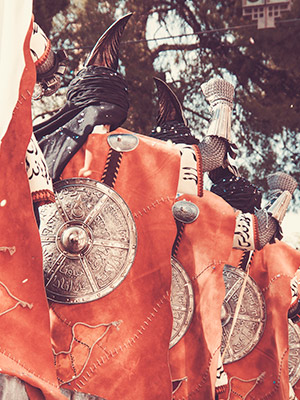
In Orihuela, as in other towns in the province of Alicante, there are the traditional parades and fighting between Moors and Christians, as well as the capturing of the castle and the gunpowder battles. But here the festivities have features that set them apart, such as the ceremonies involving the town’s flag, which is known as the “Gloriosa Enseña de Oriol”. The flag originally served a dual function: it was used both as a war banner (representing the city or even the king) and as a festive banner.
Each year a plenary session of the town council elects the Bearer of the Oriol, an honour that usually falls to someone who has made a special contribution to Orihuela, either professionally, politically or personally. On the big day, 17 July, this standard bearer marches at the head of a procession carrying the “Gloriosa Enseña de Oriol” through the town’s main streets, accompanied by the local dignitaries and all the formations of Moors and Christians.
Another feature of the Orihuela festivities is the reinstatement of the figure of La Armengola. According to legend, this woman played a key role in the Christian victory over the Saracens by intervening in a crucial moment of the battle. Since 1991, in remembrance of her, a woman has been chosen to play her part.
The Moors and Christians Pageant at Villena
The Moors and Christians pageant at Villena has the reputation of being the most participatory in the province of Alicante. Including costumed festeros and marching bands, some 12,000 people take part in the main parades. This mass celebration, with its yearly outpouring of joyous merriment, has been taking place for almost two centuries.
Its origins date back to 1474, when Our Lady of the Virtues, who is also known as “La Morenica” (the little dark one) was proclaimed the patron saint of Villena so that she would intercede in a terrible plague that ravaged the town. A statue of her was placed in a sanctuary built seven kilometres from Villena. In the second week of September this statue of the patron saint is carried in procession into Villena for her to preside over the festivities in her honour.
The meetings of envoys (“Las Embajadas”), which take place in the Atalaya Castle, and the swirling of flags by the lieutenants mark the beginning of the festivities. They are the prelude to the great day of Our Lady who statue is carried out of the side door of the church of Santiago while the municipal band plays the La Morenica pasodoble.
The “Entrada” and the “Cabalgata” (a carnivalesque parade) are Villena’s two main parades. For some years now there has also been the “Entrada” of Captains, Lieutenants and Patronesses and the youngest festeros (children under twelve) have their own parade, that of “La Esperanza”. Fourteen comparsas, seven of Moors and seven of Christians, each composed of several hundred men and women, participate in the pageant. In contrast to the parades in squadrons or filàes elsewhere, block formations, in which almost 50 festeros march in unison, are one of the features of the Moors and Christians festivities of Villena.
The Moors and Christians Pageant at Villajoyosa
At Villajoyosa, the whole town spends a week devoted to the re-enactment of a battle that took place in 1538. The locals take pride in these spectacular festivities that are over 250 years old. They are celebrated in honour of Saint Martha. According to tradition, it was she who came to the aid of the town’s inhabitants when the Berber pirates, led by Zalé-Arraez, tried to attack the town. Her presence caused a flash flood that swept away the enemy fleet.
The re-enactment of the Moorish landing is the main event of the festivities, which are held in this seaside town at the end of July. The landing takes place in the early hours of the morning, after the spectacular parades of the Moorish and Christian formations. At around five a.m. people make their way to the beach to watch the re-enactment. While the Christians make ready their artillery to defend the shore, more than 30 Muslim vessels approach the coastline.
After a series of clashes and negotiations, the fighting between the two armies culminates in a great battle that ends in the defeat of the Moors, who are symbolically returned to the sea. The story is part of the essence of Villajoyosa, and the town offers visitors who come to see the festivities an extensive programme of activities: cooking contests, open-air dances, firework displays and concerts.
The Moors and Christians Pageant at Petrer
The town of Petrer holds its Moors and Christians festivities in honour of Saint Boniface the Martyr on the weekend closest to 14 May, which is the patron saint’s feast day. Classified as of Interest for Tourism, the pageant here is among the oldest in the province. Records show that it has been held since the seventeenth century.
Right from the start, defending the coast against pirate attacks has been a key element of the festivities, together of course with the confrontation between the opposing sides. At Petrer there are ten comparsas, five on the Christian side and five on the Moorish side.
The Moors and Christians Pageant at Elche
At Elche the Moors and Christians festivities are held from 7 to 11 August in honour of Our Lady of the Assumption, the town’s patron saint. Twelve comparsas take part in them, six belonging to the Moorish side and six to the Christian side. The main events include a play about the “Baptism of the Moor”, which is a re-enactment of the conversion of the Muslims who lived in the town’s Raval neighbourhood. The Altamira Palace is the stage for the commemoration of the town’s conquest by James I, the Conqueror, King of Aragon. The performance includes a skirmish between the Moorish and Christian troops. All of the actors are festeros who belong to the different comparsas.
The Moors and Christians Pageant at Altea
In September 2019 Altea celebrated in style the 40th anniversary of its Moors and Christians pageant in honour of Saint Blaise. Here the pageant commemorates the events that occurred 775 years ago, when King James I conquered these lands.
Since 1979 the festivities have been combined with those dedicated to the Holy Christ of the Sacrarium and Our Lady of Consolation. There are open-air dances, firework displays, fairground attractions, parades and musical entertainment as well as the religious ceremonies. Naturally, one of the most special moments of the celebration is the Moorish and Christian “Entrada”. The gathering of the filàes in the Plaza de la Creu, before going up to the meeting with the Christian envoy in the Plaza de la Iglesia, is spectacular, as are both the Battle and the Moorish Surrender.




































































